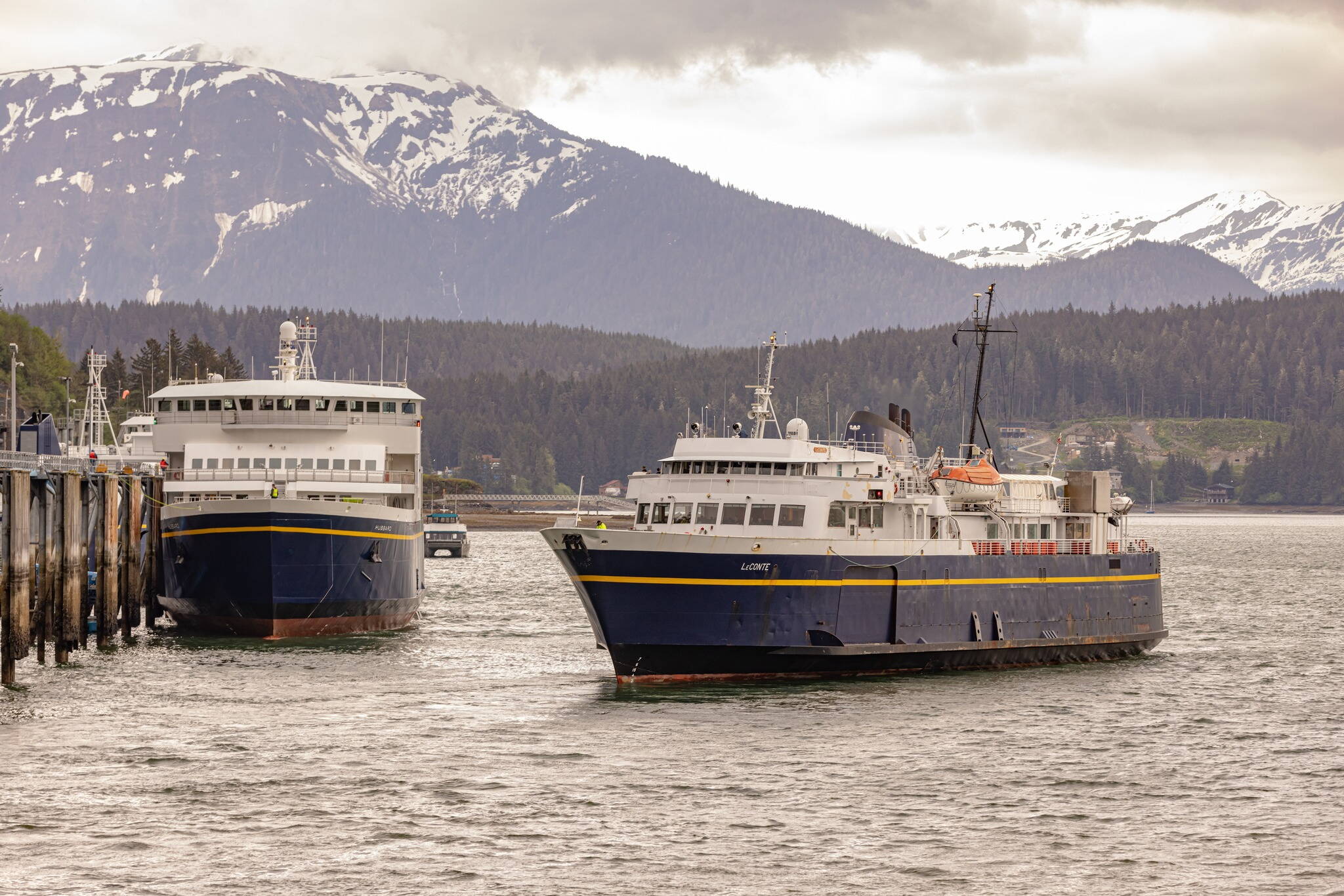There’s finally an improving outlook in filling key jobs at the Alaska Marine Highway System, and hope the ferry system may be able to put both the Columbia and Kennicott vessels into service next summer, allowing the restoration of cross-Gulf routes and other services lacking this year, officials said during an AMHS Operations Board meeting Friday.
The proposed summer schedule for the ferry system is scheduled for public release and comment next week, with six of the nine AMHS vessels currently designated for use, AMHS Marine Director Craig Tornga told the board. But the hope is to add an additional mainliner ferry as a seventh vessel if there are enough employees.
“We’re not going to put it in there until we are sure we can crew it,” he said. However “it looks pretty good that we will get that in there going into the summer schedule.”
The ferry system has suffered some of the worst staffing shortages of any state agency during the past couple of years. The problem was compounded by a faulty payroll system that resulted in incomplete or missing pay, and employees quitting and union representatives reportedly discouraging members from applying for vacant positions.
However, the downward trend has reversed in recent months, Tornga said.
“We’ve got a ways to go, but since we last met four months ago we’ve hired 42 and we’ve lost 19 over that timeframe,” he said. “And we weren’t negative in any of the categories as far as positions we usually are and so that was a plus.”
The AMHS payroll system was transferred this summer to its parent agency, the Alaska Department of Transportation and Public Facilities, which is seeing a similar gradual — but not yet complete — recovery, Tornga said.
“They’ve still got a lot of past issues — pay issues on the forms (that) they’ve got to clean up,” he said. “But they’re making progress on it.”
Mainline routes were scaled back this summer because the Columbia and Kennicott were not put into service at the same time due to lack of crew. Among other impacts, that meant the Kennicott didn’t make Gulf of Alaska trips between Southeast Alaska and Whittier, since the vessel was replacing the Columbia on the route between Southeast and Bellingham, Washington. Sailings to Prince Rupert, British Columbia, and Yakutat were also canceled.
Hopes of restoring the latter two routes were expressed by two state lawmakers who attended the early portion of the board meeting remotely to offer public comments. State Rep. Rebecca Himschoot, a Sitka independent, said she wants to see expanded service to smaller Southeast communities year-round.
“I would really, really, really like to see a summer schedule that includes Pelican, Angoon, Kake, some of these smaller communities,” she said. “Especially Tenakee and Angoon that don’t have airstrips. And I know I’ve said it before and I’m going to keep saying it. But those communities need the most regular service that we can provide.”
Furthermore, winter is when those communities are most in need of ferry service, Himschoot said. The AMHS schedule in recent years has offered service only once or twice a month — and at times none — to some of those communities.
State. Rep. Dan Ortiz, a Ketchikan independent, expressed “the hope that if we do staff that seven vessels that we get back to Prince Rupert somehow.”
The Columbia is scheduled for a 151-day annual maintenance period beginning Dec. 15, while the Kennicott is receiving a 168-day overhaul in Ketchikan, according to an AMHS maintenance schedule presented to the board.
The board meeting occurred a day after an additional $131 million in federal funds was being provided to AMHS from bipartisan infrastructure legislation that has already provided the ferry system with hundreds of millions of dollars for facility and vessel upgrades. Of the recent funds, $92 million is additional funding to support the replacement of the Tustumena mainline ferry that serves Southwest Alaska and $38 million is designated “for sustainable operations to rural communities.”
• Contact Mark Sabbatini at mark.sabbatini@juneauempire.com or (907) 957-2306.

